By Amanda Rose Newton
If you’re trying to attract butterflies — especially monarchs — to your Florida garden, milkweed is a must. But with so many varieties available at garden centers, it’s easy to get confused. Pink? White? Swamp? Tropical? Native? Let’s break down the types of milkweed you’re likely to come across in Central Florida, when they grow, and which ones are best for butterflies and the environment.

Why Milkweed is So Important
Milkweed (Asclepias spp.) is the only plant that monarch butterflies lay their eggs on and the only food monarch caterpillars can eat. Without milkweed, we wouldn’t have monarchs. It’s also a nectar source for other pollinators like bees and swallowtails, making it a valuable plant for any Florida-friendly landscape.
But not all milkweed is equal — especially when it comes to protecting monarch populations year-round.
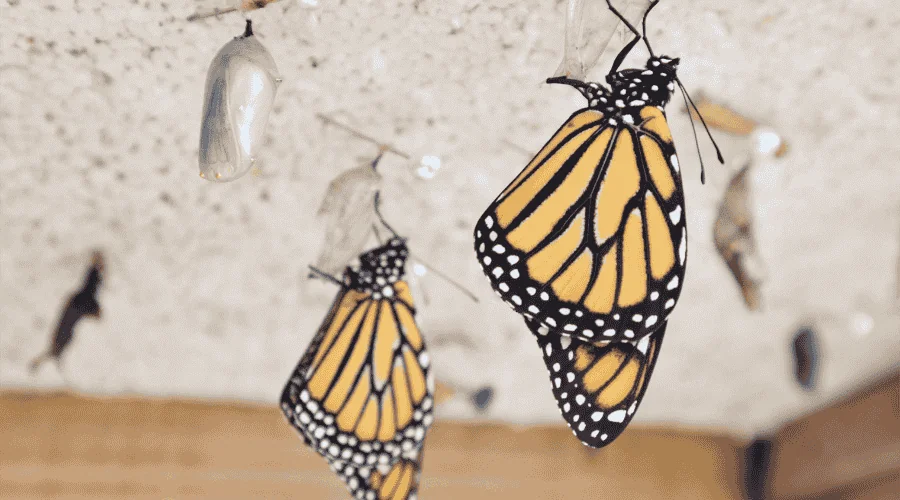
Native vs Non-Native Milkweed: Why It Matters
Many nurseries and garden centers in Florida carry tropical milkweed (Asclepias curassavica) — with bright red and yellow flowers, it’s eye-catching and blooms year-round. Sounds perfect, right? Unfortunately, it’s not.
The Problem with Tropical Milkweed
Tropical milkweed does not go dormant in winter like native varieties. This disrupts monarch migration patterns and can lead to year-round breeding in Florida, which increases the risk of disease — especially Ophryocystis elektroscirrha (OE), a parasite that can weaken or kill monarchs.
Best practice: Avoid tropical milkweed or cut it back to the ground each fall to prevent disease buildup and mimic natural seasonal cycles. Even better, choose native milkweed species that naturally go dormant.
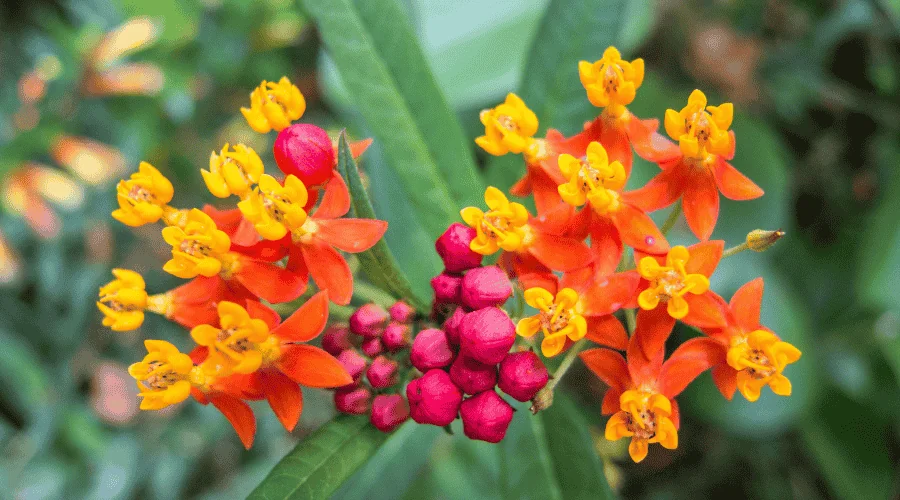
Types of Milkweed for Central Florida
Here are the most common varieties you’ll encounter — and which ones are best for your garden and the monarchs.
Swamp Milkweed (Asclepias incarnate)
- Color: Pink to light mauve
- Habitat: Moist soils, ditches, and wetland edges
- Season: Blooms in Summer
- Native to Florida: Yes
- Care Tips: It tolerates wet feet, is taller (3-4 feet), and is attractive to many butterfly species.
White Milkweed (Asclepias perennis)
- Color: White
- Habitat: Shady, moist woodlands and wet areas
- Season: Spring/Summer
- Native to Florida: Yes
- Care Tips: A more delicate, low-growing milkweed perfect for damp, partially shaded gardens.
Pink/Common Milkweed (Asclepias syriaca)
- Color: Light pink to purplish
- Habitat: Fields and prairies
- Season: Summer
- Native to Florida: No (native to other parts of the U.S.)
- Care Tips: Has poor performance in our heat and humidity.
Tropical Milkweed (Asclepias curassavica)
- Color: Bright red and yellow
- Habitat: Disturbed areas and gardens
- Season: Year-Round
- Native to Florida: No (native to Central and South America)
- Care Tips: If you grow it, cut it back in the fall to protect monarch health, or consider replacing it with native species.
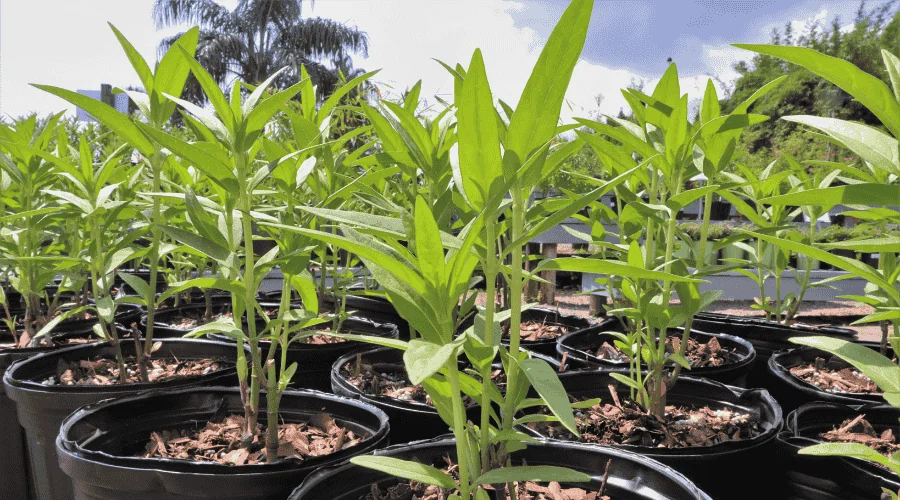
Growing Season in Central Florida
Native Milkweed: Sprouts in late spring, blooms during summer, and goes dormant in fall/winter, aligning with natural monarch migration and breeding cycles.
Tropical Milkweed: Grows and blooms year-round unless manually cut back.
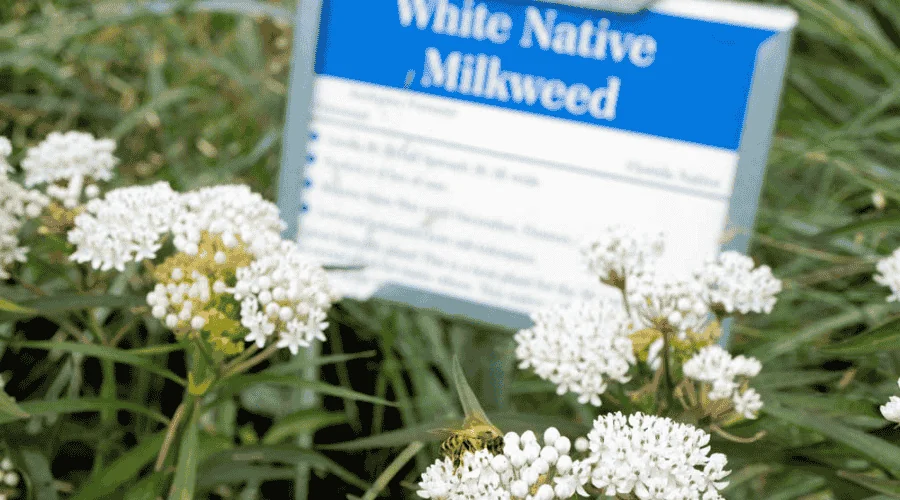
Butterfly Activity in Florida
Monarch butterflies are present in Central Florida for much of the year, but peak migration and breeding occur in spring and fall. Having the right milkweed at the right time helps provide food and egg-laying opportunities for migrating monarchs while supporting local pollinators.
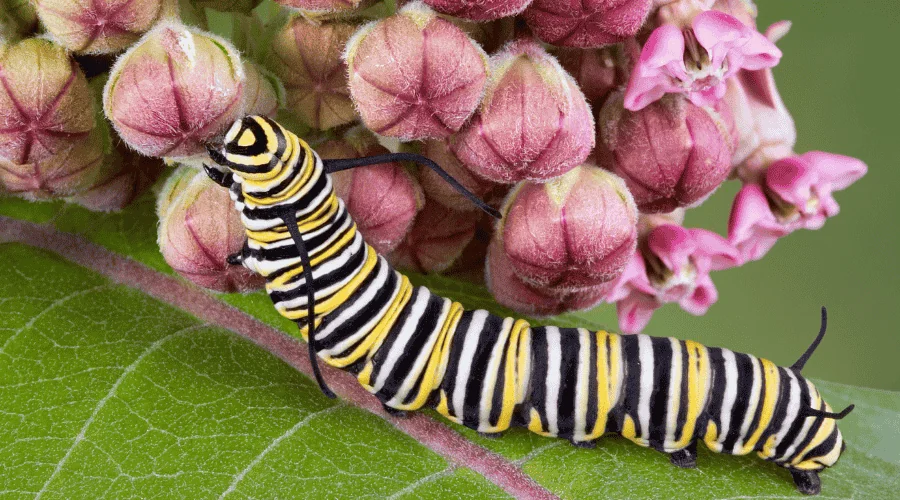
Choosing the right milkweed helps support monarchs and other butterflies sustainably and healthily. For Central Florida, swamp milkweed and white milkweed are your top native picks. If you already have tropical milkweed in your garden, consider transitioning to natives or making sure you manage it responsibly.
With a bit of planning, you can turn your garden into a safe haven for pollinators — and enjoy the beauty of butterflies all season long.


